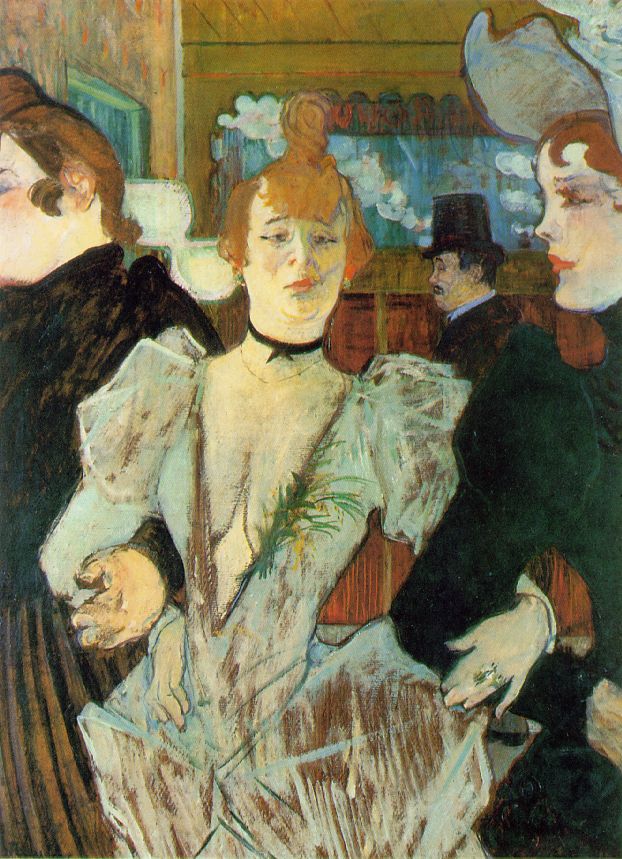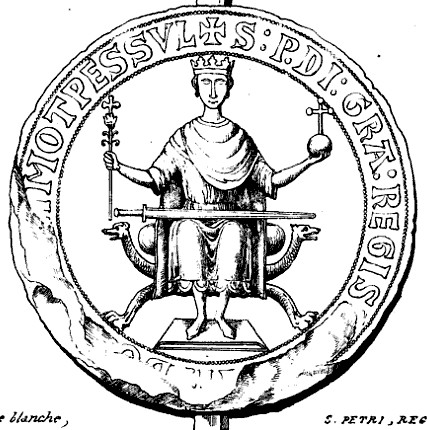|
Ademar Lo Negre
Ademar lo Negre ("Adhemar the Black")His name is also spelled ''Azemar'', french: Adémar le Noir, la, Adelmarus Niger. was a troubadour from Languedoc in the early thirteenth century (fl. 1210–1219). He was originally from Château-Vieux (''Castelveill''), which was under the jurisdiction of the Trencavel lords of Albi at the time. He was patronised by Peter II of Aragon and Raymond VI of Toulouse and even spent some time at the court of Ferdinand III of Castile. Four ''cansos The ''canso'' or ''canson'' or ''canzo'' () was a song style used by the troubadours. It was, by far, the most common genre used, especially by early troubadours, and only in the second half of the 13th century was its dominance challenged by a ...'' of his survive. Sources *Lang, H. R"The Relations of the Earliest Portuguese Lyric School with the Troubadours and Trouvères."''Modern Language Notes'', 10:4 (Apr., 1895), pp. 104–116. *''The Vidas of the Troubadours''. Margarita Egan, t ... [...More Info...] [...Related Items...] OR: [Wikipedia] [Google] [Baidu] |
Troubadour
A troubadour (, ; oc, trobador ) was a composer and performer of Old Occitan lyric poetry during the High Middle Ages (1100–1350). Since the word ''troubadour'' is etymologically masculine, a female troubadour is usually called a ''trobairitz''. The troubadour school or tradition began in the late 11th century in Occitania, but it subsequently spread to the Italian and Iberian Peninsulas. Under the influence of the troubadours, related movements sprang up throughout Europe: the Minnesang in Germany, ''trovadorismo'' in Galicia and Portugal, and that of the trouvères in northern France. Dante Alighieri in his ''De vulgari eloquentia'' defined the troubadour lyric as ''fictio rethorica musicaque poita'': rhetorical, musical, and poetical fiction. After the "classical" period around the turn of the 13th century and a mid-century resurgence, the art of the troubadours declined in the 14th century and around the time of the Black Death (1348) it died out. The texts of troubadou ... [...More Info...] [...Related Items...] OR: [Wikipedia] [Google] [Baidu] |
Languedoc
The Province of Languedoc (; , ; oc, Lengadòc ) is a former province of France. Most of its territory is now contained in the modern-day region of Occitanie in Southern France. Its capital city was Toulouse. It had an area of approximately 42,700 square kilometers (16,490 square miles). History The Roman province of Gallia Narbonensis fell to the Visigothic Kingdom from the 5th to the 8th centuries. Occupied briefly by the Emirate of Córdoba between 719 and 759, it was conquered and incorporated into the Kingdom of the Franks by Pippin the Short in 759 following the Siege of Narbonne. Under the Carolingians, the counts of Toulouse were appointed by the royal court. Later, this office became hereditary. Part of the territory where Occitan was spoken came to be called ''langue d'oc'', ''Lengadòc'' or Languedoc. In the 13th century, the spiritual beliefs of the area were challenged by the See of Rome and the region became attached to the Kingdom of France following the ... [...More Info...] [...Related Items...] OR: [Wikipedia] [Google] [Baidu] |
Floruit
''Floruit'' (; abbreviated fl. or occasionally flor.; from Latin for "they flourished") denotes a date or period during which a person was known to have been alive or active. In English, the unabbreviated word may also be used as a noun indicating the time when someone flourished. Etymology and use la, flōruit is the third-person singular perfect active indicative of the Latin verb ', ' "to bloom, flower, or flourish", from the noun ', ', "flower". Broadly, the term is employed in reference to the peak of activity for a person or movement. More specifically, it often is used in genealogy and historical writing when a person's birth or death dates are unknown, but some other evidence exists that indicates when they were alive. For example, if there are wills attested by John Jones in 1204, and 1229, and a record of his marriage in 1197, a record concerning him might be written as "John Jones (fl. 1197–1229)". The term is often used in art history when dating the career ... [...More Info...] [...Related Items...] OR: [Wikipedia] [Google] [Baidu] |
Trencavel
The Trencavel was an important noble family in Languedoc between the 10th and 13th centuries. The name "Trencavel" began as a nickname and later became the family's surname. The name may derive from the Occitan words for "Nutcracker" (''trenca avelana''). The name was traditionally restricted in actual use only to those family members named Raymond, but the last Trencavel viscount, Raymond II, preferred the surname over his given name and adopted it for his charters. The first well-known member of the family was Ato I, viscount of Albi in the early 10th century. He was followed by five generations of viscounts of Albi in direct father-to-son descent. During this same period the family came to dominate the episcopacy of Languedoc. Each of the viscounts from Ato II on had a younger brother named Frotarius (or Frothaire) who was a bishop, be it of Albi, Cahors, or Nîmes. History In 1069, the three daughters of Peter II of Carcassonne sold the Counties of Carcassonne, Razè ... [...More Info...] [...Related Items...] OR: [Wikipedia] [Google] [Baidu] |
Albi
Albi (; oc, Albi ) is a commune in southern France. It is the prefecture of the Tarn department, on the river Tarn, 85 km northeast of Toulouse. Its inhabitants are called ''Albigensians'' (french: Albigeois, Albigeoise(s), oc, albigés -esa(s)). It is the seat of the Archbishop of Albi. The episcopal city, around the Cathedral Sainte-Cécile, was added to the UNESCO list of World Heritage Sites in 2010 for its unique architecture. The site includes the Musée Toulouse-Lautrec, dedicated to the artist who was born in Albi. Administration Albi is the seat of four cantons, covering 16 communes, with a total population of 72,416 (2019). History The first human settlement in Albi was in the Bronze Age (3000–600 BC). After the Roman conquest of Gaul in 51 BC, the town became ''Civitas Albigensium'', the territory of the Albigeois, ''Albiga''. Archaeological digs have not revealed any traces of Roman buildings, which seems to indicate that Albi was a modest Roman ... [...More Info...] [...Related Items...] OR: [Wikipedia] [Google] [Baidu] |
Peter II Of Aragon
Peter II the Catholic (; ) (July 1178 – 12 September 1213) was the King of Aragon and Count of Barcelona from 1196 to 1213. Background Peter was born in Huesca, the son of Alfonso II of Aragon and Sancha of Castile. In 1205 he acknowledged the feudal supremacy of the papacy and was crowned in Rome by Pope Innocent III, swearing to defend the Catholic faith (hence his epithet, "the Catholic"). He was the first king of Aragon to be crowned by the pope. In the first decade of the thirteenth century Peter commissioned the ''Liber feudorum Ceritaniae'', an illustrated codex cartulary for the counties of Cerdagne, Conflent, and Roussillon. Marriage On 15 June 1204 Peter married (as her third husband) Marie of Montpellier, daughter and heiress of William VIII of Montpellier by Eudocia Comnena. She gave him a son, James, but Peter soon repudiated her. Marie was popularly venerated as a saint for her piety and marital suffering, but was never canonized; she died in Rome in 1 ... [...More Info...] [...Related Items...] OR: [Wikipedia] [Google] [Baidu] |
Raymond VI Of Toulouse
Raymond VI ( oc, Ramon; October 27, 1156 – August 2, 1222) was Count of Toulouse and Marquis of Provence from 1194 to 1222. He was also Count of Melgueil (as Raymond IV) from 1173 to 1190. Early life Raymond was born at Saint-Gilles, Gard, the son of Raymond V and Constance of France. His maternal grandparents were Louis VI of France and his second wife Adélaide de Maurienne. His maternal uncles included Louis VII of France. In 1194 he succeeded his father as count of Toulouse. He immediately re-established peace with both Alfonso II of Aragon and with the Trencavel family. Marriages He was married six times: # On December 11, 1172, to Ermessende of Pelet, Countess of Melgueil. She died in 1176 without issue. # In 1178 to Beatrice of Béziers, sister of Roger II Trencavel. She left Raymond and retired to a nunnery. Raymond and Beatrice had one daughter. ##Constance of Toulouse, who was married first to King Sancho VII of Navarre, and secondly to Pierre-Bermond II of Sau ... [...More Info...] [...Related Items...] OR: [Wikipedia] [Google] [Baidu] |
Ferdinand III Of Castile
Ferdinand III ( es, Fernando, link=no; 1199/120130 May 1252), called the Saint (''el Santo''), was King of Castile from 1217 and King of León from 1230 as well as King of Galicia from 1231. He was the son of Alfonso IX of León and Berenguela of Castile. Through his second marriage he was also Count of Aumale. Ferdinand III was one of the most successful kings of Castile, securing not only the permanent union of the crowns of Castile and León, but also masterminding the most expansive southward territorial expansion campaign yet in the Guadalquivir Valley, in which Islamic rule was in disarray in the wake of the decline of the Almohad presence in the Iberian Peninsula. By military and diplomatic efforts, Ferdinand greatly expanded the dominions of Castile by annexing the Guadalquivir river valley in the south of the Iberian Peninsula, establishing the boundaries of the Castilian state for the next two centuries. New territories included important cities such as Baeza, Úbeda, ... [...More Info...] [...Related Items...] OR: [Wikipedia] [Google] [Baidu] |
Canso (song)
The ''canso'' or ''canson'' or ''canzo'' () was a song style used by the troubadours. It was, by far, the most common genre used, especially by early troubadours, and only in the second half of the 13th century was its dominance challenged by a growing number of poets writing ''coblas esparsas''. The ''canso'' became, in Old French, the ''grand chant'' and, in Italian, the ''canzone''. Structure A ''canso'' usually consists of three parts. The first stanza is the ''exordium'', where the composer explains his purpose. The main body of the song occurs in the following stanzas, and usually draw out a variety of relationships with the ''exordium''; formally, aside from the ''envoi''(''s''), which are not always present, a ''canso'' is made of stanzas all having the same sequence of verses, in the sense that each verse has the same number of metrical syllables. This makes it possible to use the same melody for every stanza. The sequence can be extremely simple, as in ''Can vei la ... [...More Info...] [...Related Items...] OR: [Wikipedia] [Google] [Baidu] |
13th-century French Troubadours
The 13th century was the century which lasted from January 1, 1201 ( MCCI) through December 31, 1300 ( MCCC) in accordance with the Julian calendar. The Mongol Empire was founded by Genghis Khan, which stretched from Eastern Asia to Eastern Europe. The conquests of Hulagu Khan and other Mongol invasions changed the course of the Muslim world, most notably the Siege of Baghdad (1258), the destruction of the House of Wisdom and the weakening of the Mamluks and Rums which, according to historians, caused the decline of the Islamic Golden Age. Other Muslim powers such as the Mali Empire and Delhi Sultanate conquered large parts of West Africa and the Indian subcontinent, while Buddhism witnessed a decline through the conquest led by Bakhtiyar Khilji. The Southern Song dynasty would begin the century as a prosperous kingdom but would eventually be invaded and annexed into the Yuan dynasty of the Mongols. The Kamakura Shogunate of Japan would be invaded by the Mongols. Goryeo resiste ... [...More Info...] [...Related Items...] OR: [Wikipedia] [Google] [Baidu] |
.jpg)
.jpg)




